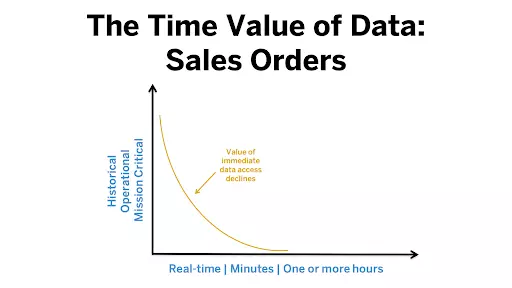We’ve all experienced the endless process interruptions and confusions that come with using spreadsheets to run your enterprise. In this article, you’ll what it means to optimize your spreadsheet game with the power of integration.
Why integrate?
We love spreadsheets. Spreadsheets are familiar, safe, and provide us with the information we need to make decisions. They allow us to turn data into information, and to transform that information into intelligence. Business runs on spreadsheets.
We hate spreadsheets. Every business has that one person (usually in operations) that has mastered the art of spreadsheet manipulation. They extract the data from any source, transform the data into logical categorizations, pivot, copy, pivot again and produce a smooth chart that shows the trajectory of the data. This workflow is complicated, and is not likely to be replicated by anyone else. The spreadsheet guru is usually pitching transparency of information. Can a spreadsheet truly provide transparency?
The downfall of spreadsheet organization
Spreadsheets provide an easily recognizable format through which we can quickly process information. Charts, summary tables, and infographics abound in this format. We love them because we know them, and we hate them because we don’t know them.
Have you ever seen two different spreadsheets that represent the same information? We all have, and we have all seen the disparity between the two. No two people process information the same way. Each individual brings their own bias and experience to how they process the data. Even though the data may be consistent, the processing of that data through differing workflows can lead to conflicting information.

As a spreadsheet guru, I have often found myself representing data in such a way as to justify my preconceived outcomes. In that sense, the production of a spreadsheet infographic is quite similar to watching a game of Three-card Monte. A filter here, a pivot there, a cut and paste of selected pivot data, and yet another pivot table and voila… a nice bell curve. And let’s not forget the interlaced VLOOKUPs and array formulas. The workflow becomes entirely convoluted, and ridiculous to follow. Decision makers are forced then to rely on the information presented in the spreadsheet without fully understanding the derivation of that information. I can’t count how many times an executive has asked me to highlight a cell so that they can see the formula behind it. As a master of sleight of hand I think to myself, “Ok… next contestant. Follow the queen!”
If you can’t follow the workflow, how do you know the information is worth acting on?
The artifacts of integration
Transparency
Central to the concept of integration is transparency. Every stage of your business process has an associated business system. Your marketing and sales functions are tracked through a CRM, your Order to Cash and Procure to Pay through an ERP, your labor costs through a HRIS or Payroll system, and any other number of BI tools. Each can manage an element of your business, and some can manage multiple elements. The spreadsheet guru thrives in this environment. With so many disparate sources of data, the data fusion workflow ultimately determines how you perceive the health or performance of your business.
This does nothing to provide true transparency. While the spreadsheets within the organization turn data into information in a familiar format, they do not provide transparency as the workflow is still convoluted. Now imagine the game of Three-card Monte and think of how easy the game would be if you knew the pattern the dealer was using. You would be able to find the queen every time. This is true transparency, and this is the intent of business system integration. By integrating all of your business workflows into a system of systems, a truly transparent system of record can be achieved. A single source of truth.

Participation
When true transparency is achieved the spreadsheet guru will feel threatened. Why? Because now every person in the organization is able to participate in understanding the data. Experts are now able to leverage expertise with the psychological safety net of sound data behind their decisions. Departments or divisions are able to anticipate downstream and upstream impacts in their daily operations. The organization is able to communicate. Business system integration allows the entire organization to operate on the same sheet of music. This sounds much better than each group playing their own song.
Accessibility
In our personal lives we have instant access to information. If I don’t know how to do something, a quick internet search guides me to a how-to. Why then does it take so long to receive an open orders report? All of that workflow is managed by someone, and that takes time. Remember all of the cutting, pasting, and pivoting that must be done to accomplish the data fusion. If it takes the spreadsheet guru half a day to complete one report, and that report is based on data that was pulled yesterday, the information that you are seeing is already a day and half old. Is the information really accessible at this point? Any decisions made on these reports are already late.

Nothing can be more important to the efficient operation of a business than the accessibility of information. During the pandemic, I had the pure joy of directing the operations of multiple manufacturing sites. Due to supply chain constraints and uncertainty in demand we were forced to transition to make-to-order fulfillment. Our disparate systems made lead-time determination on new orders very difficult. When a new PO was received, it was entered into the ERP by manually transferring customer info from the CRM. As the sales team eagerly awaited confirmation of delivery date, we then had to pull inventory information from the ERP and look at existing open orders in the production schedule spreadsheet to determine capacity. If raw material was lacking, we had to pull our purchasing report to identify delivery dates. If we did not have production capacity we had to pull info from Workday for second shift staffing levels and availability of a second line. Ultimately, PO confirmation and delivery date took more than 2 hours in a perfect scenario. More often than not, it took days to gather and process all of the data from multiple systems to confirm an order. This lag led to lost orders, frustrated sales managers, and overworked production staff. All of this because each portion of the process was managed in a different system; it might as well have been hidden. The process would have been far more efficient if I was able to see everything within my business.
Even when we were at our most efficient, and all information was accessible, the timeliness of the data led to several past due deliveries. Our ERP information was updated when backflushing was completed at the end of the day, which drove our inventory information. Our purchasing information was updated when raw materials were received. Our production schedules were updated when the production manager had time to update the spreadsheet. To confirm one simple order required processing of information from multiple snapshots of each system. This often led to a misunderstanding of availability in our raw materials, leading to lost orders. The business systems that were meant to support our business were wreaking havoc on our sales and operational planning process.
Fallout
Integration leads to transparency, enhanced participation, and real-time accessibility of information. This allows you to see everything all at once. However, seeing everything all at once has a cost. When you have a single source of truth for your business the many inefficiencies that all businesses experience come to light. This leads to change, most often for the better. Regardless, change is difficult and can lead to some challenging decisions. Fortunately, having a fully integrated system of business systems will aid in informing these decisions.
Integration = Cohesion
Once the dust settles on the astonishing revelations of how your business really functions, integration brings cohesion. Decision makers now have access to real-time, cross-functional information. Departments are able to see upstream and downstream impacts of their decisions. The once blind-sided can now see the future. The floundering department is now thriving with actionable intelligence. And decisions happen quickly with a high degree of psychological safety. Cohesion.
As all tech companies will say, “it’s that easy!” The reality is that more integration efforts fail than succeed. According to Panorama Consulting Group, there are 8 common cause for a failed integration (https://www.panorama-consulting.com/system-integration-failures/):
- Inadequate support from senior management
- Rushing the integration process
- Moving forward with unclean data
- Tasking IT with everything
- Neglecting automatic data synching
- A lack of clear project management
- A lack of cross-software knowledge
- Failing to test properly
Of these common causes there is a steel thread. Integrations fail because they are viewed as technological integration projects, rather than business integration projects. When viewed as simply connecting different business systems, an integration effort will fail. Business systems can’t be viewed as a solution; rather, they provide the means with which to communicate the solution. Transparency, accessibility, and participation are not business systems, they are part of a business culture. As such, integrating all disparate business systems with your ERP is a cultural transformation, not a software development project.
OSI assists customers everyday with this change in perspective. OSI focuses first on understanding your business: the workflows, the people, the systems. With this in mind, OSI advises customers on industry best practices to match business needs with solutions. Integration is more than a project, it is a journey. OSI guides customers on this journey towards a full business revelation, integrating people with technology, empowering you to see everything.
Enter Search Term
Get Started
Take the next step to connect with us and discover the power of Odoo. We look forward to speaking with you!
CALL NOW






